Tags
- #UniversalMaterialTestingMachine
- #MaterialPropertiesTestingMachine
- #MaterialTestingMachine
- #CompressionTestingMachine
- #UTM
- #TensileTestingMachine
- #TensileTest
- #TensileStrength
- #HydraulicFatigueTestingMachine
- #HydraulicUniversalMaterialTestingMachine
- #FatigueTestingMachine
- #HydraulicServoUniversalMaterialTestingMachine
- #HydraulicServoTensileTestingMachine
- #CharpyTestingMachine
- #CharpyImpactTestingMachine
- #ImpactTestingMachine
- #CharpyImpactTester
- #VNotch
- #UNotch
- #ISO148-1
- #ISO148
- #MetalImpactTestingMachine
- #ASTME23
- #ASTMA370
| [ISO] ISO 148-1: Metallic Charpy Impact Test | |
|---|---|
| Writer : 관리자(salt@light-salt.kr) Date : 24.03.18 Hit : 40 | |
| Tags : #UniversalMaterialTestingMachine,#MaterialPropertiesTestingMachine,#MaterialTestingMachine,#CompressionTestingMachine,#UTM,#TensileTestingMachine,#TensileTest,#TensileStrength,#HydraulicFatigueTestingMachine,#HydraulicUniversalMaterialTestingMachine,#FatigueTestingMachine,#HydraulicServoUniversalMaterialTestingMachine,#HydraulicServoTensileTestingMachine,#CharpyTestingMachine,#CharpyImpactTestingMachine,#ImpactTestingMachine,#CharpyImpactTester,#VNotch,#UNotch,#ISO148-1,#ISO148,#MetalImpactTestingMachine,#ASTME23,#ASTMA370 | |
| Attachments : | |
|
Hello this is SALT CO., LTD. a specialized manufacturer of material testing machines. Today, we'll be posting about ISO 148-1~!
What is ISO 148-1?
ISO 148-1 is an international standard for impact testing of metallic materials. This standard provides standardized test methods for evaluating the impact properties of various metallic materials.
Purpose of ISO 148-1 Testing It evaluates how well metals withstand external impacts. Through this test, we can understand how metals react when subjected to situations where they may break or fracture. During the test, standardized samples are used and placed in an impact testing machine. Impact is applied to the sample with a specific amount of energy. This allows us to measure how much energy the metal absorbs when subjected to impact. This information is crucial when considering safety in product design and use. In essence, ISO 148-1 is used to evaluate the strength and durability of metal materials to ensure product safety.
ISO 148-1 Sample
In the Charpy test, either a V-notch or U-notch is made on the sample for testing. These notches are added to measure the energy absorption at the end of the test sample and evaluate the material's impact characteristics. Depending on the material properties, According to ISO 148-1, the size of the impact test sample with V-notch or U-notch is Length: 55mm / Width: 10mm / Thickness: 10mm. If it's not possible to create standard specimens from the material to be tested, the thickness of the specimen can also be 7.5mm, 5.0mm, or 2.5mm. These specimens are considered small specimens.
V-notch: A test method where a notch is made in the shape of a V on the sample to apply impact. V-notches are typically made at a 45-degree angle. U-notch: A test method where a notch is made in the shape of a U on the sample to apply impact. U-notches are typically made at a 90-degree angle.
Equipment Needed for ISO 148-1 Testing?
Charpy Impact Testing Machine or Charpy Impact Tester is used to perform impact tests according to ISO 148-1. The Charpy Impact Testing Machine typically uses a hammer to provide impact energy to the test sample. The test samples are manufactured in Charpy or Charpy-V shapes, and the end of the test sample collides with the hammer. By measuring how much energy the test sample absorbs during impact, the material's impact characteristics are evaluated.
Features of SALT CO.,'s Charpy Impact Testing Machine (ST-300)
Salt Co., Ltd.'s all-purpose material tester provides a variety of grips, extensometers and test solutions to meet the requirements of physical property testing of various materials.
"We value our relationship with you more than just selling our products."
Salt-s@Light-Salt.kr www.light-salt.kr |
|
| Prev | ASTM C109/C109M standard test method for compressive strength of hydraulic cement mortars |
| Next | ASTM D575 Standard Test Methods for Rubber Properties in Compression. |
|
|
























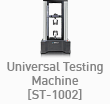

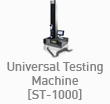
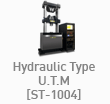
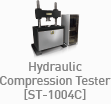
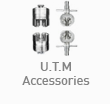
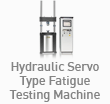

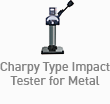






















































































![[포맷변환]machined-parts-4673366_1280.png](http://www.light-salt.kr/admin/data/webedit/20240318143437_28167753.png)




